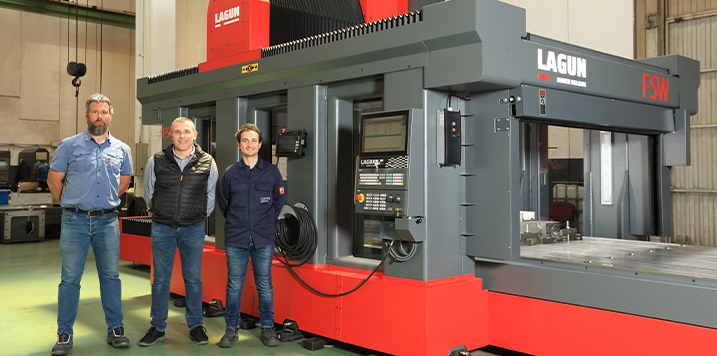 08 June, 2022
08 June, 2022The prototype has been developed thanks to the LIGHTBEE project, promoted by Smart Eureka and financed by the CDTI, in which entities from Spain, Turkey and Belgium participate.
The overall objective of the research project is to develop a range of new high value-added battery components for the transport industry, using innovative joining technologies.
LIGHTBEE seeks to overcome the design and manufacturing limitations of electric vehicle battery trays in order to lighter, watertight, more economical and sustainable battery trays. To this end, work is being carried out on new lightweight high-strength aluminium, multi-material solutions and new advanced joining techniques.
Specifically, the consortium formed by LAGUN, a machine-tool manufacturer, and EKIDE, a supplier of high value-added components, together with the technology centre specialising in joining technologies LORTEK, is developing the processes and machinery necessary to join the electric vehicle battery trays using Friction Stir Welding (FSW).
This technology consists of welding different aluminium alloys without adding material, taking advantage of the low temperature generated by friction. It avoids the thermal deformations that occur when using conventional processes, avoiding subsequent post-processes for the straightening of the parts. In addition, it offers multiple advantages such as the high quality of the welded joints, ensuring tightness, the possibility of welding aluminium that cannot currently be welded, the possibility of making dissimilar joints and reduced distortions. Likewise, it is an automatic, repetitive and low energy consumption process.
In the words of Aitor Agirre, Managing Director of LAGUN MACHIN TOOLS, “we believe that friction welding technology has enormous potential to respond to the innovations necessary in the electric vehicle, railway and aeronautical sectors. Above all, in applications where the weight of the material to be joined is a key factor, such as in electric vehicle battery boxes and in structural panels in trains and aircraft”.
 08 June, 2022The prototype has been developed thanks to the LIGHTBEE project, promoted by Smart Eureka and financed by the CDTI, in which entities from Spain, Turkey and Belgium participate.
08 June, 2022The prototype has been developed thanks to the LIGHTBEE project, promoted by Smart Eureka and financed by the CDTI, in which entities from Spain, Turkey and Belgium participate.